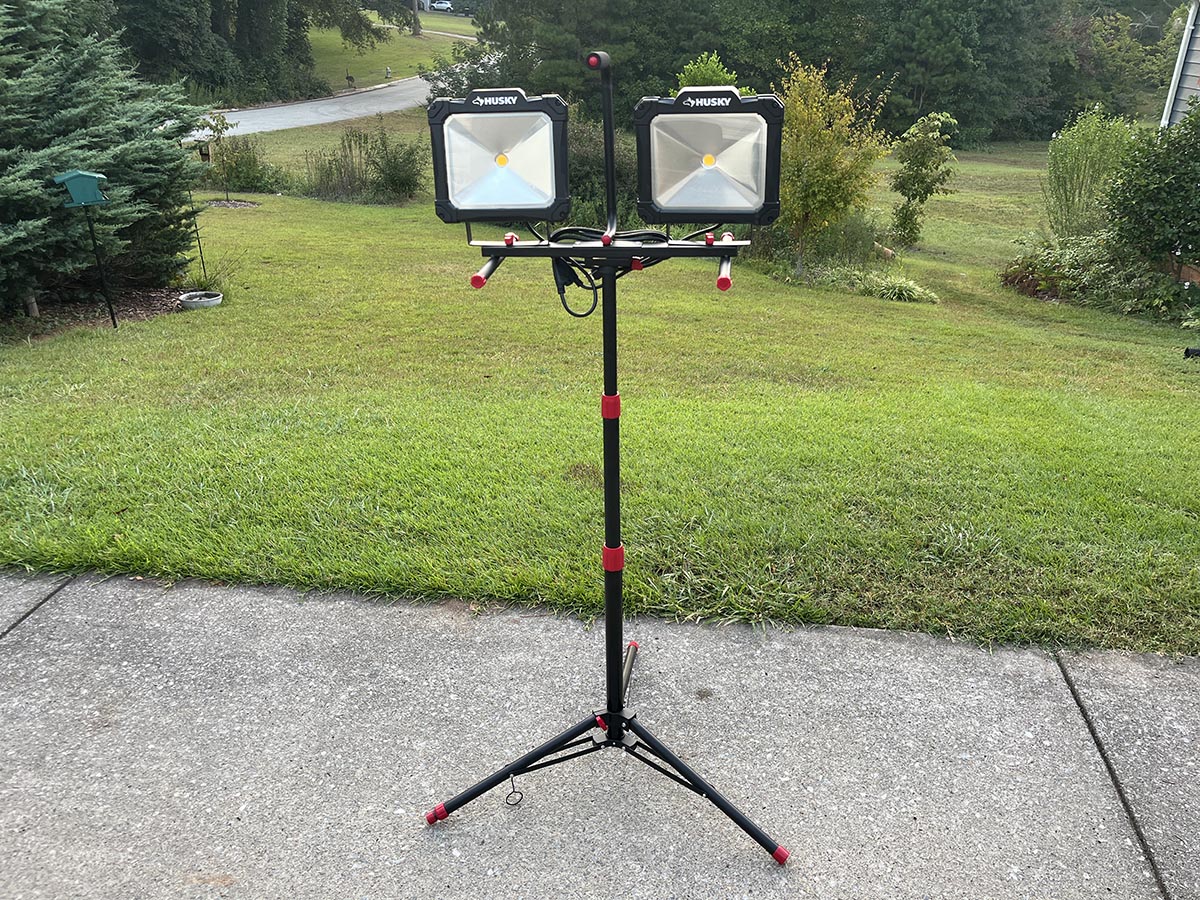
We may earn revenue from the products available on this page and participate in affiliate programs. Learn More ›
It’s easy to overlook lighting on a project site until you’re straining to see and wishing for a good work light. Anyone who has raced the setting sun to complete a deck or relied solely on natural light to finish drywall knows the struggle. Poor lighting increases eye strain, mistakes, and accidents. A portable work light can eliminate those problems and help you get the project wrapped up faster. There are many options to choose from, including handheld, hanging, and even wearable work lights, but some of the most popular types for illuminating larger work areas, including the Husky LED work light I tested for this review, are freestanding.
I wanted to find out how well the Husky 10,000-Lumen Twin Head LED Work Light would illuminate my indoor and outdoor project areas in the absence of other light sources. In this review I will explain why I chose to test this light in the first place, and why I think it is one of the best freestanding work lights to have on hand for all kinds of home repairs and maintenance projects.
Husky 10,000-Lumen Twin Head LED Work Light: At a Glance
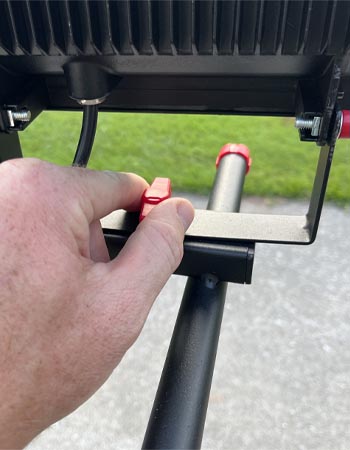
Rating: 4.7/5
SPECS
- Type: Standing
- Power source: Plug-in
- Output: 10,000 lumens
- Indoor or outdoor: Both
WHAT WE LIKE
- Twin adjustable lamps tilt and pivot independently
- Tripod adjusts from 41 inches to 76 inches high
- Lights can be used with or without the tripod
- Wide area lighting for large worksites
- Budget-friendly price
WHAT WE DON’T LIKE
- Requires an outlet
- Cords can become a trip hazard
Get the Husky work light at:
What is the Husky 10,000-lumen work light?
Freestanding tripod work lights are nothing new. This style of portable work lighting has been around for years and remains popular because it is durable, affordable, and effective. But even tried-and-true designs benefit from upgrades from time to time. Once upon a time, the best stand-up work lights used halogen bulbs, which were delicate to handle and burned hot enough to raise the temperature in the room while in use. Newer versions, like the Husky 10,000-lumen LED work light, come equipped with cool-burning, bright, and energy-efficient LED lamps.
This light features a pair of 5,000-lumen LED lamps that emit 4000K, or Kelvins, of neutral white light for brightness and to enhance detail visibility. (Kelvins are a measurement of how cool or warm a light’s color is.) The lamps share a base with a convenient padded carry handle at the top. With its built-in feet, the twin-lamp head can be used with or without the included tripod. Without the tripod, the lights stand 13 inches high, making them easy to fit into a crawl space or other tight quarters. For open-space lighting, add the tripod and adjust the height between 41 inches and 76 inches high. Connecting and disconnecting the tripod takes just a few seconds, thanks to a single-lever quick-connect attachment system.
I tested the Husky work light in a few locations, on and off the tripod. It’s a simple corded light that is easy to operate and puts out plenty of light for 100 to 150 square feet of workspace. The lightweight tripod seems durable for moderate use, and it’s compatible with indoor and outdoor applications, even in wet weather. Best of all, when I used the light in my crawl space, the area didn’t become unbearably hot. This may not be the right work light for every situation, but it’s great for those projects where you need a lot of light and unlimited runtime.
Assembly and Adjustability
Some assembly was required before I could use the light. I needed to install the two lamp assemblies onto the head unit using the included thumb screws, which took less than 5 minutes. Going forward, those thumb screws are used to loosen and secure the lamps for the left/right position adjustment. Another set of thumb screws on the sides of the lamp assemblies was used to secure the up/down tilt adjustment. They worked well when the light was set and left alone, but bumping into the stand could knock them out of alignment.
Quick-connect components were preassembled on the head unit and the tripod. After I attached them, the light was ready to use. The telescoping tripod was equipped with twist locks to fix the height as well as a cord retainer on one of the legs to reduce tripping hazards. One of the legs also had a telescoping extension that allowed me to level the light when working on uneven ground. Although the twist locks worked effectively, I prefer snap locks for speed and convenience.
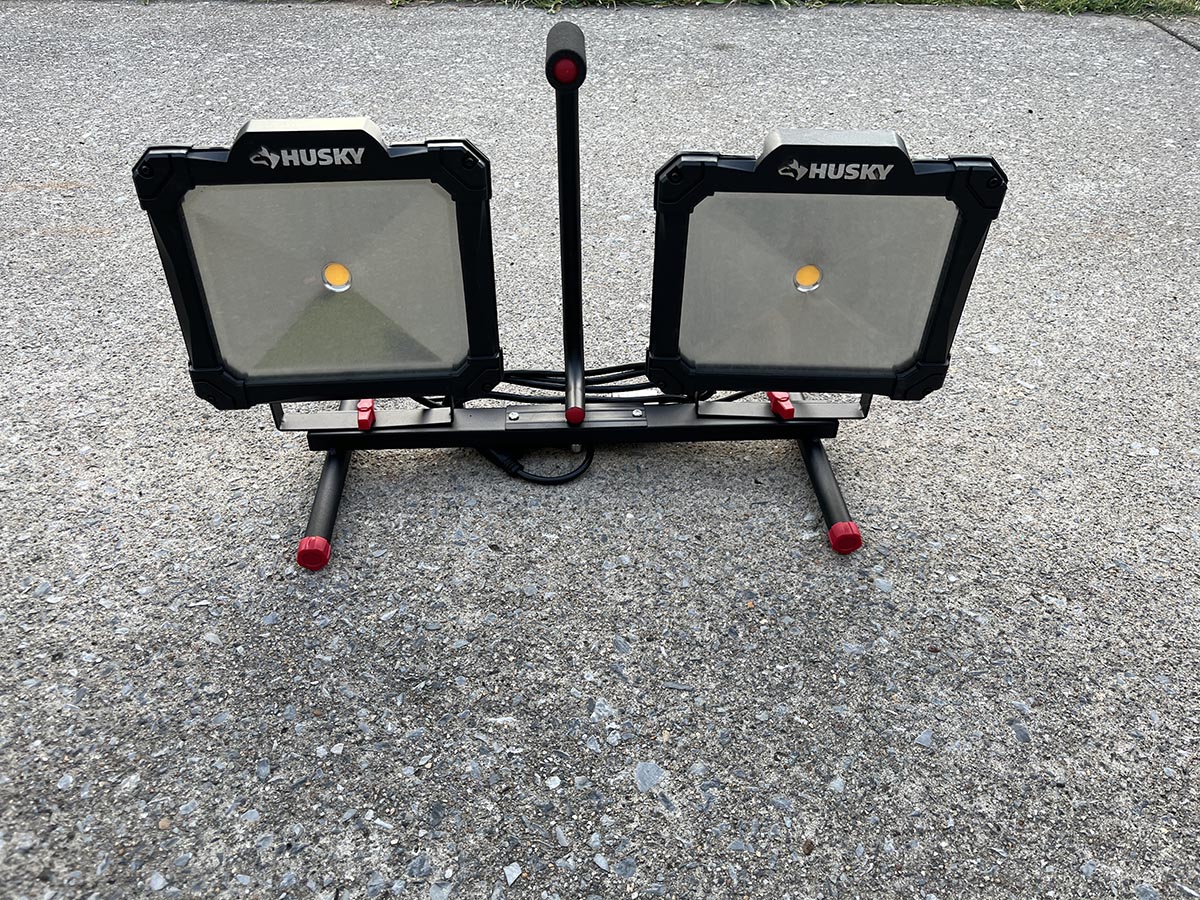
Light Output and Quality
I really liked that each of the two lamps was equipped with its own power switch, which let me choose between 5,000 and 10,000 lumens. A single lamp was adequate for one person working at a workbench or sawhorse. With both lamps on, it produced enough light for a 100- to 200- square-foot or larger work area. I also liked having the option of lighting two separate areas simultaneously, such as a sawhorse and a loading area.
As for the quality of light, I liked the 4000K output, which is the natural white light commonly used in office settings. It allowed me to clearly see texture details on work surfaces and to clearly distinguish subtle color tone differences; both of these become more difficult to see under the warmer tones of halogen and incandescent lighting. I felt more confident doing detail work with this light than I would have with older versions I’ve used in the past.
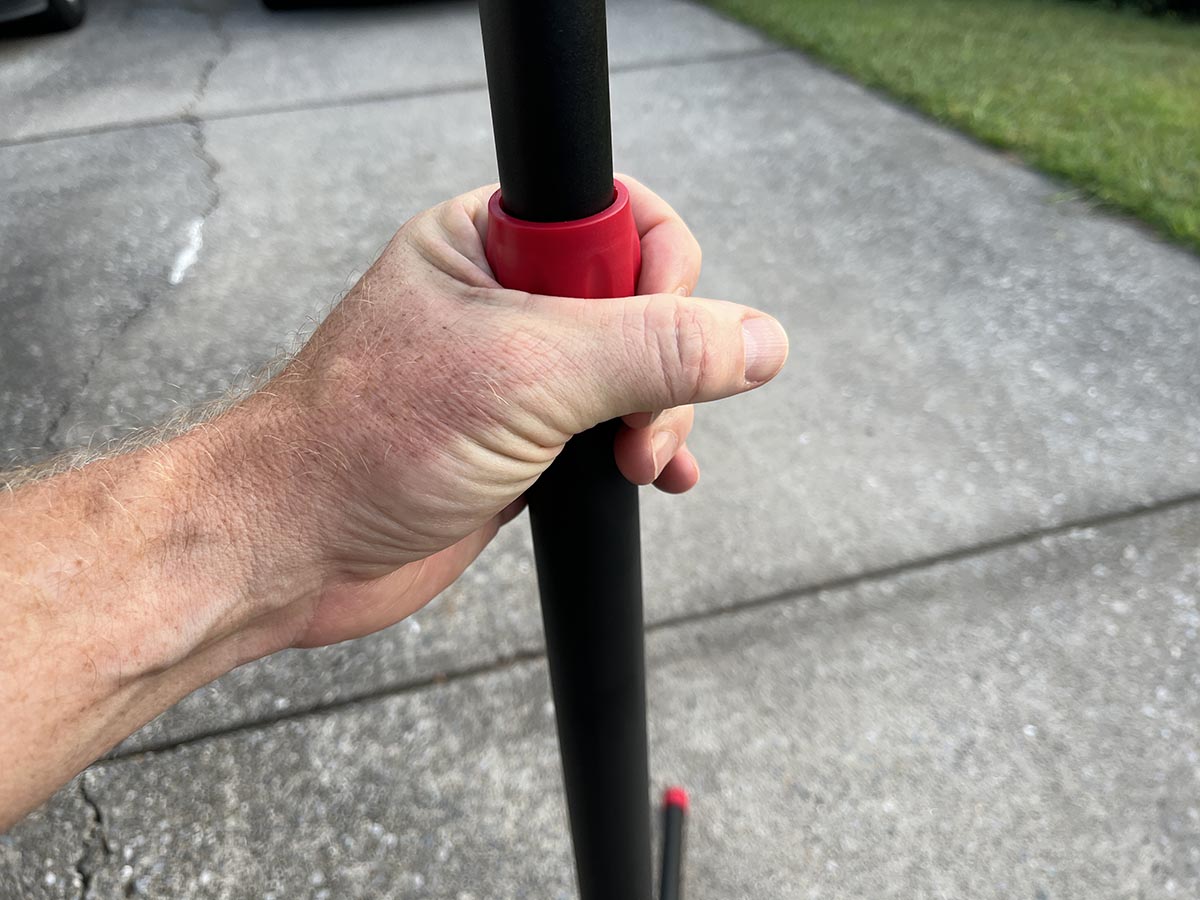
Storage and Transport
When the work was finished, I wrapped the power cord around the brackets on the light head and removed the head from the tripod. The tripod neck and legs retracted and folded down easily enough, but a cover would have helped avoid snagging and tangling the legs with other tools. The lamps moved around quite a bit with the least jostle, but the lenses were made of a durable plastic material, so I used ordinary caution to avoid damage and had no trouble.
Is the Husky work light worth the money?
There are a lot of work lights on the market, and most are moving toward LED technology. When comparing the value of this unit to other options, I prioritized light output and quality, adjustability, durability, and price. With that in mind, the Husky twin head work light is a little more expensive than average along the pricing spectrum. But it also offers better light quality and some adjustment features that similar models do not. When all the details are factored in, it seems to be fairly priced.
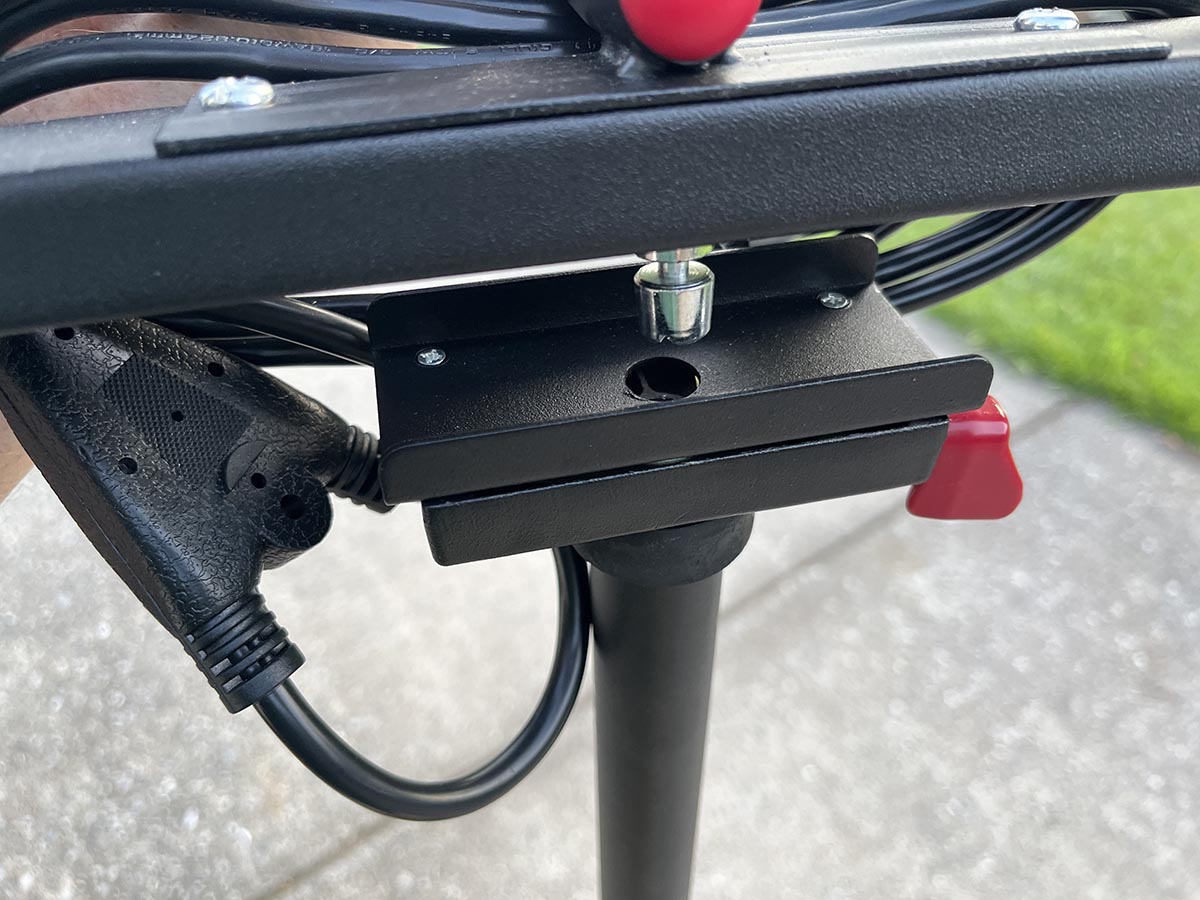
Is the Husky work light right for you?
When you need a work light, not just any light will do. Everyone wants the best work light, but individual use cases make it nearly impossible to point to a single one and say, “That’s it!” This unit could shed some light under the hood when you are working on your car, but there are better automotive work lights. And this one won’t cut it during a power outage unless you get the backup generator running first. So be sure to check out our guide to the best work lights for different options if this one doesn’t line up with your needs.
The Husky 10,000-lumen work light is ideal for wide-area lighting both indoors and outdoors. The lamps put out a ton of light, but they do not generate a lot of heat. This makes them ideal when you’re working in cramped spaces like a basement or attic crawl space. Whether you are remodeling, adding on, or have occasional use for bright light where you have easy access to electricity, the Husky work light could be a great option.
Get the Husky work light at The Home Depot for $138.
Meet the Tester
Mark Wolfe is a writer and product tester with an extensive background in the nursery and landscaping industry. For more than 20 years he mowed, edged, planted, pruned, cultivated, irrigated, and renovated beautiful landscapes. Now he tests and writes reviews about the latest outdoor power equipment, hand tools, lawn care products, and other outdoor-living goods.
